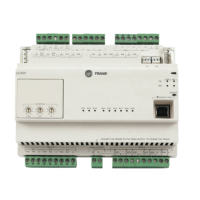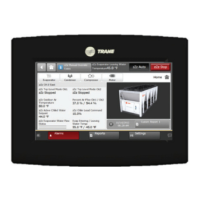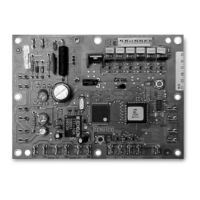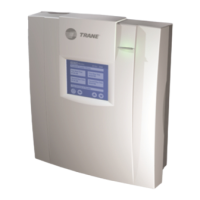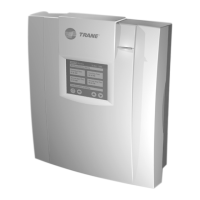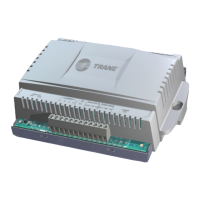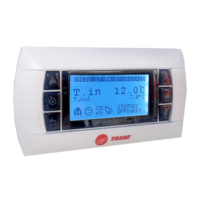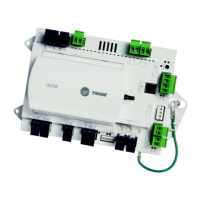CNT-SVX17G-EN 41
Sequence of Operations
The controller heat/cool mode is determined by either a communicated request or by the
controller itself, when the heat/cool mode is auto. When the heat/cool mode is auto, the
controller compares the primary air temperature with the configured auto-changeover
setpoint to determine if the primary air is hot or cold. This is called autochangeover. This
determination may differ from the reported heat/cool mode, which matches the zone
demand.
The control compares the active space setpoint and the active space temperature and
calculates the desired capacity. The control positions the modulating air valve to deliver
the desired airflow (cooling or heating capacity).
Heating or Cooling Control Mode Operation
Heating or cooling control mode of the controller can be determined by either a
communicated request (via communicated heat/cool mode or communicated
application mode) or automatically by the controller.
Communicated Request
A building automation system or peer controller may communicate the heating or
cooling mode to the controller using the following network variables:
• Communicated heat/cool mode;
• Communicated application mode.
Heating mode commands the controller to heat only (implies primary air temperature is
hot
). Cooling mode commands the controller to cool only (implies primary air
temperature is cold). During cooling mode the use of reheat is possible. The
communicated application mode enables the controller to automatically change from
heating to cooling or cooling to heating.
Automatically by the Controller
A communicated request of auto or the controller default operation (auto) can place the
unit in heating or cooling mode. When the controller automatically determines the
heating or cooling mode, the unit switches to the desired mode based on the primary air
temperature.
Initial Space Demand Determination for Space Temperature Control
When the controller powers up or after it resets, it makes an initial determination of what
the space demand should be: heat or cool. If the initial space temperature is less than the
occupied heating setpoint, the initial space demand is heat; if not, the initial space
demand is cool. The space demand is what is reported in reported heat/cool mode and
the mode field of reported unit status.

